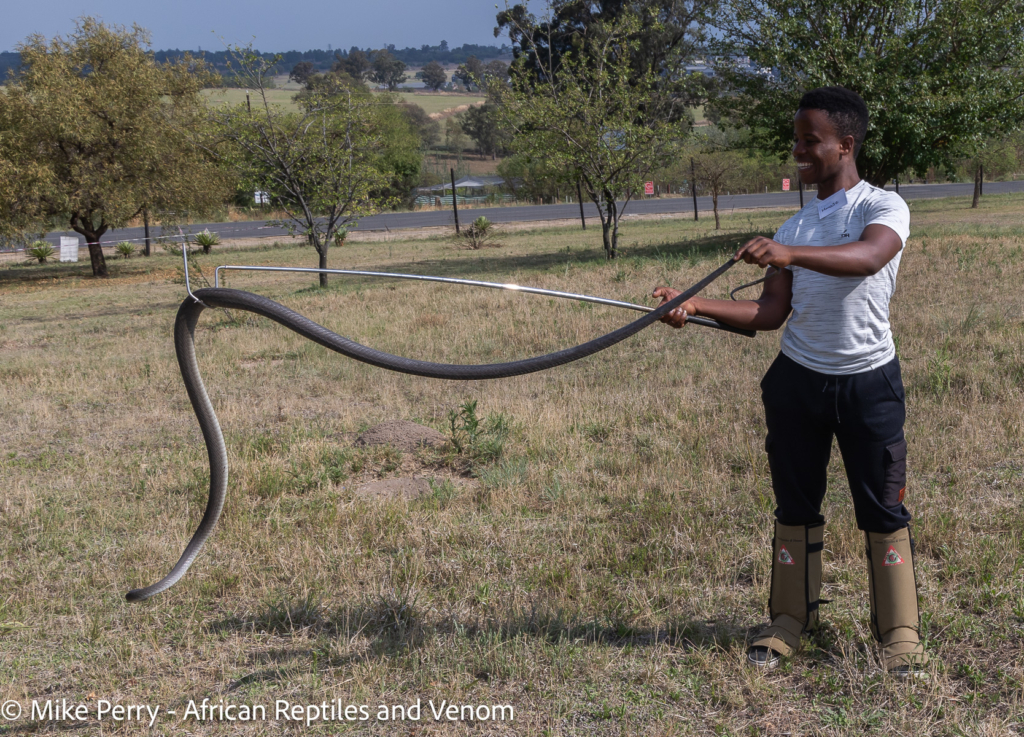Color Variations in the Boomslang
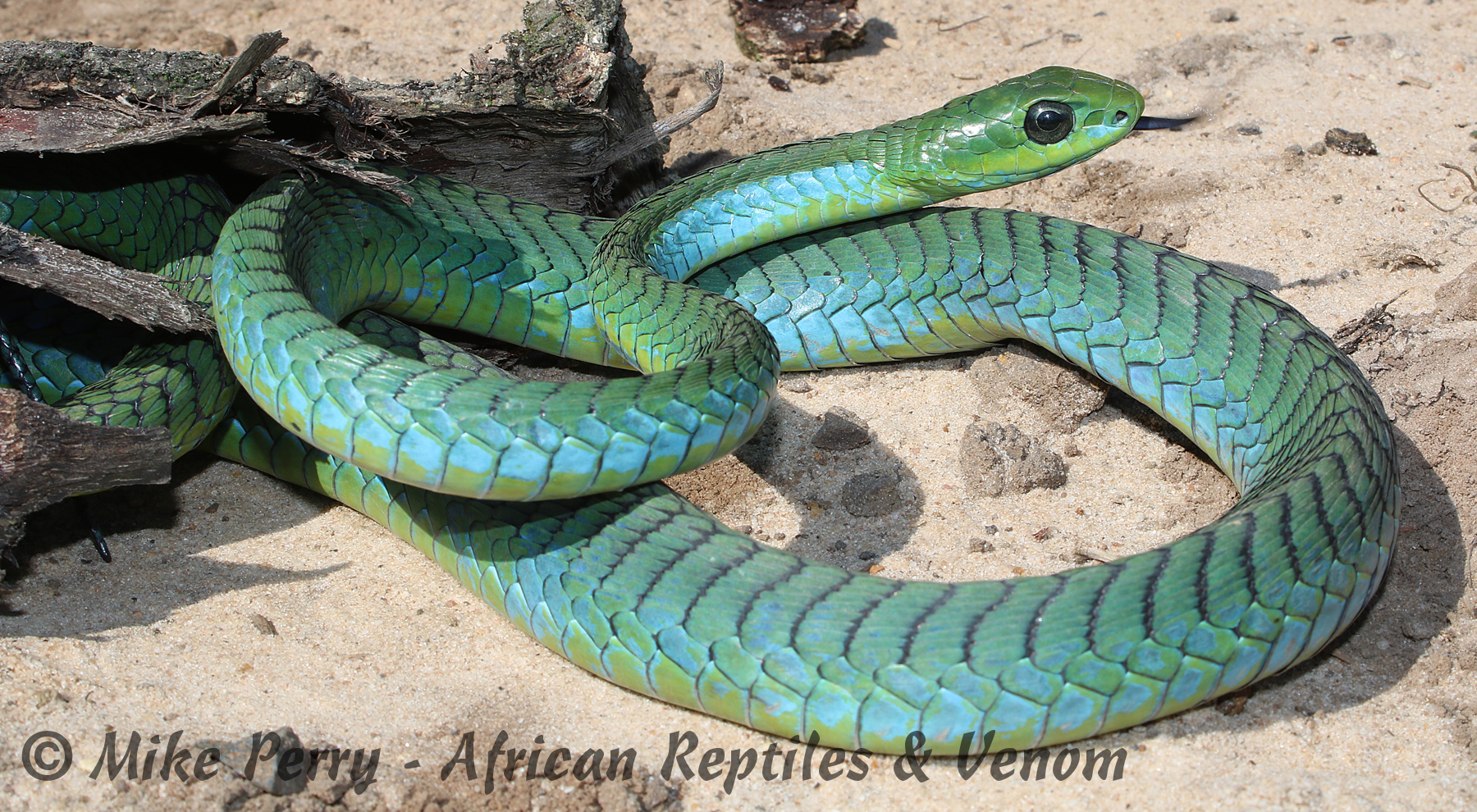
Introduction to the Boomslang (Dispholidus typhus)
The infamous Boomslang is one of the most widely distributed snakes in Africa, being found across most of sub-Saharan Africa , with the exception of extremely arid regions.
Although the Boomslang is mostly regarded as a single far-ranging species, several forms have been described over time, since last century. None of these additional forms have been widely accepted as valid, by all scientists, at any given time. In this article we treat the Boomslang as a single, widely distributed species.
General colors
Adult female Boomslang are usually brown in colour
Adult males are usually green.
This rule is sometimes broken where green females and brown males have occasionally been found.
Young Boomslang, under one meter are grey and brown in color, with a huge emerald green eye.
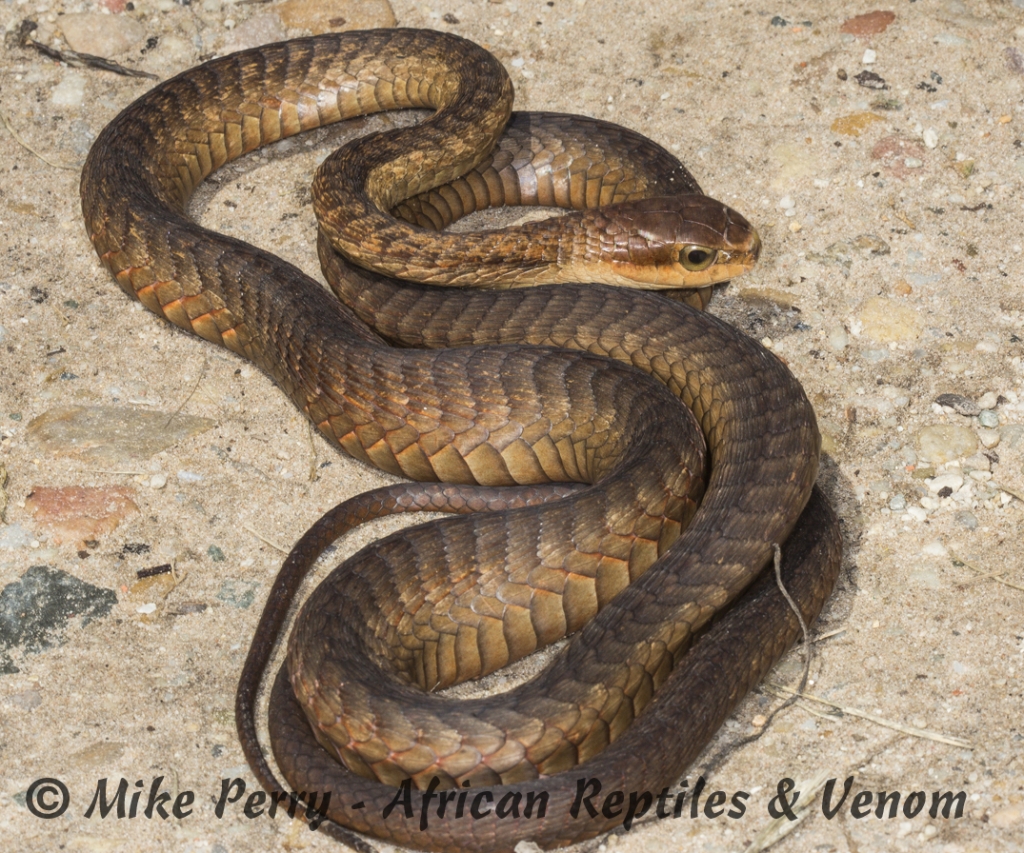
Boomslang Hatchlings & Juveniles:
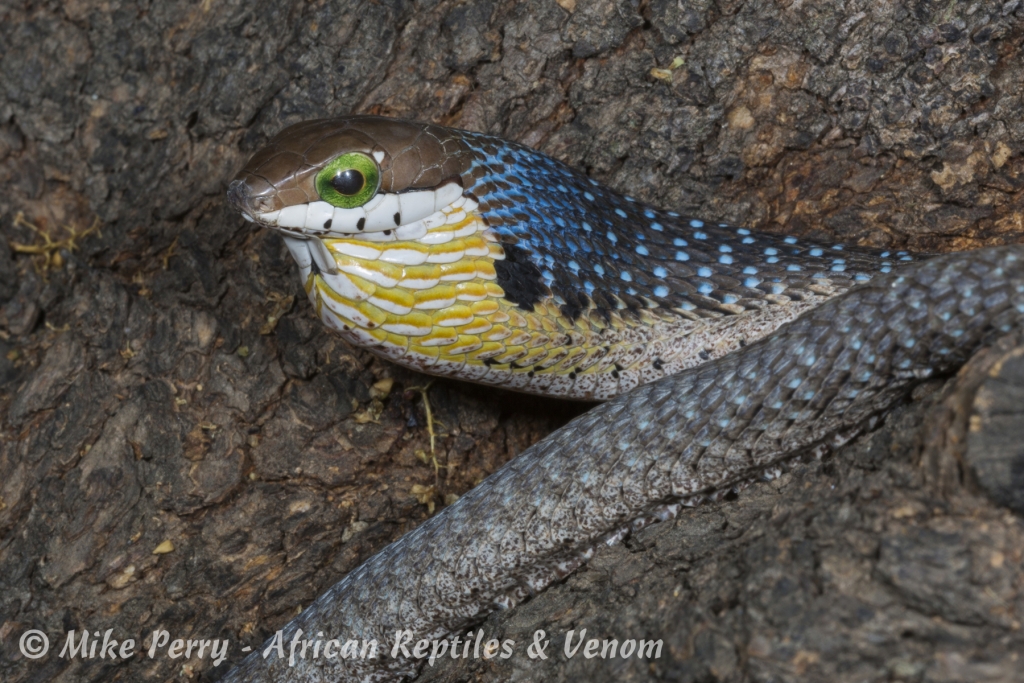
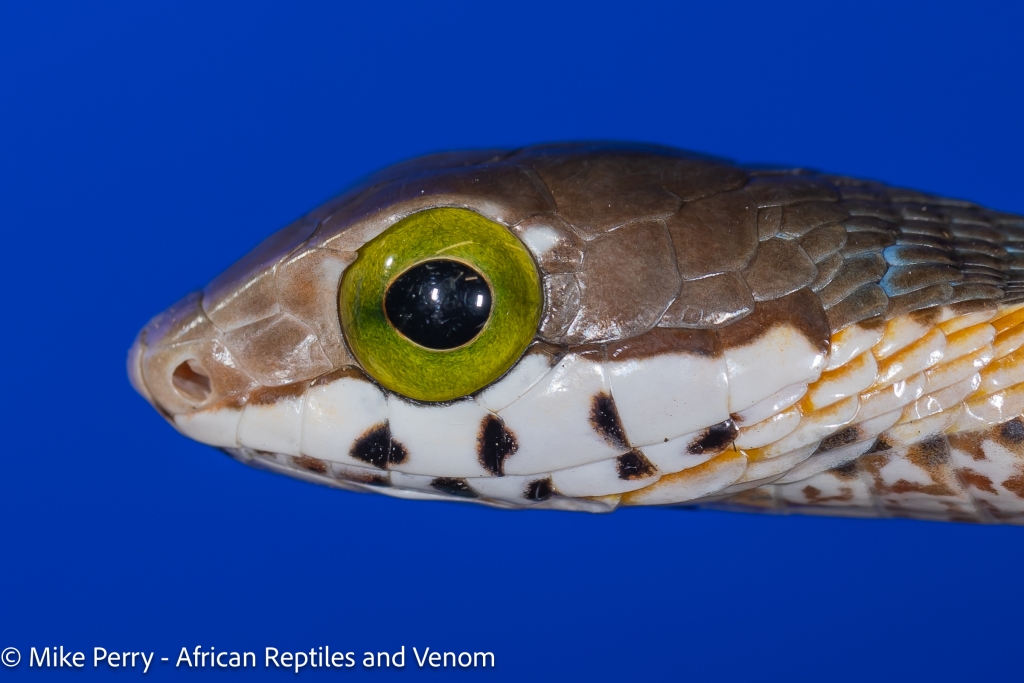
Juvenile Boomslang often have bright blue and yellow or orange coloration on the neck which is especially visible when the snake inflates its throat in threat display.
- Length: ~30 to ~100 cm
- Coloration: Body primarily grey or brown (never green) with a distinctive bright emerald green eye (characteristic of hatchlings).
- In young Boomslang the neck may show varying amounts of bright yellow and blue markings, especially when inflated.
- In juveniles the top half of the head is brown and the bottom half of the head is white.
- Eye color fades with age, becoming brownish green.
Coloration Changes in Boomslang
- Hatchling colors are retained for most of the first year.
- Subadults (around 1 meter): Develop softer shades of brown or green.
- ADULT FEMALES:
- Primarily brown.
- Primarily brown.
- ADULT MALES:
- Exhibit more color variation:
- Uniform green, or green with black-edged scales. Sub-saharan Africa, South Africa (KwaZulu-Natal, Mpumalanga, etc).
- Blackish above with contrasting yellow, green, or orange sides and belly. (Western/Eastern Cape).
- Black or black with yellow or green speckling (Equatorial Africa, Central Africa).
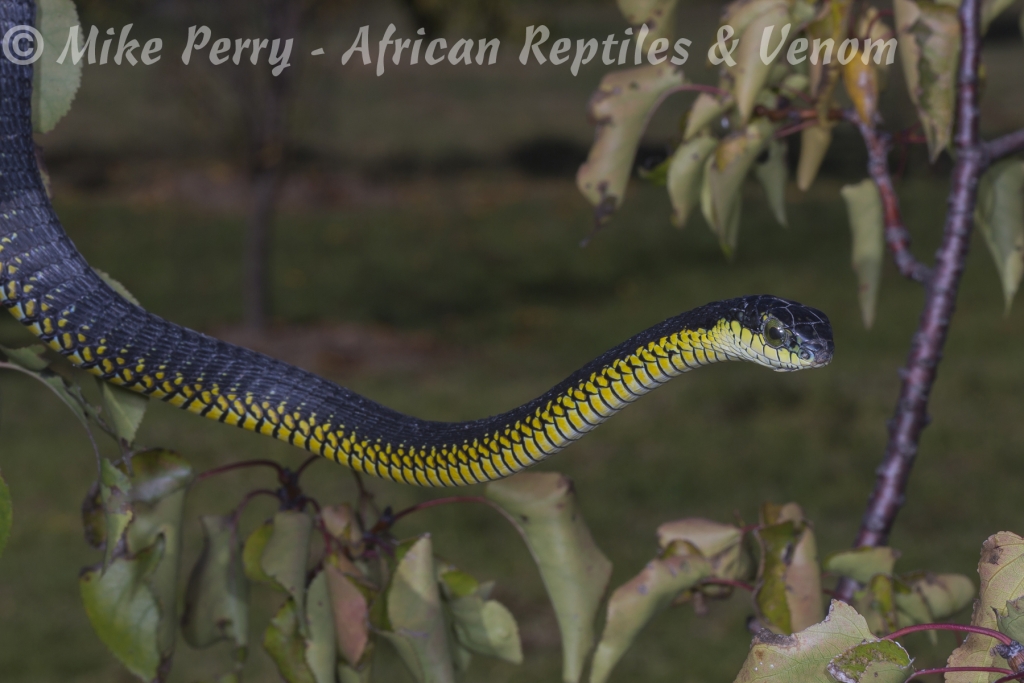
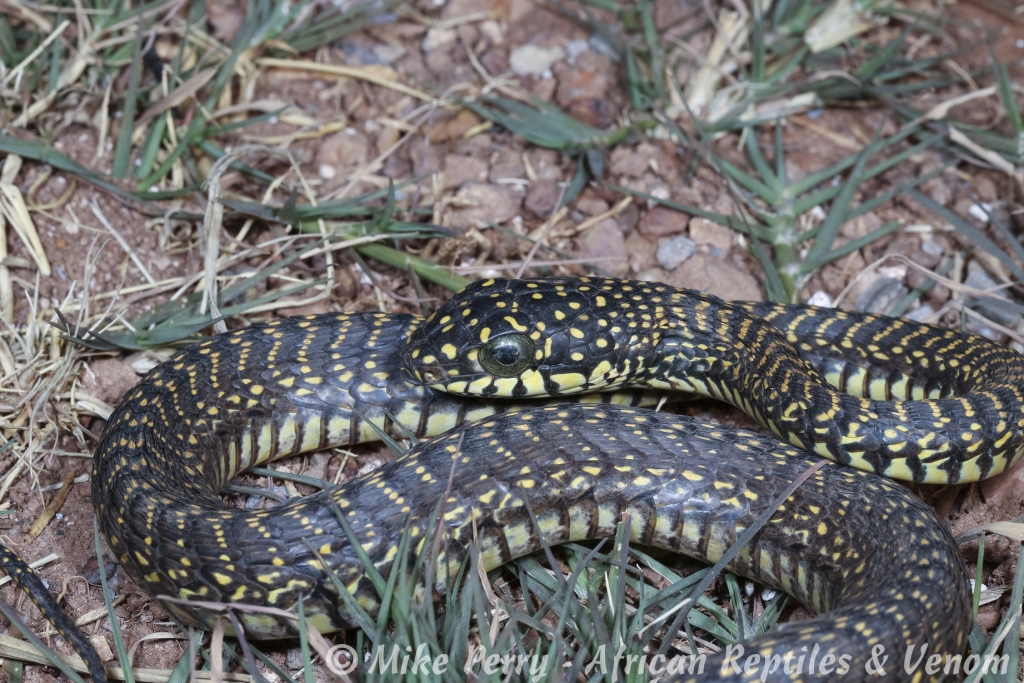
Boomslang Biology & Features:

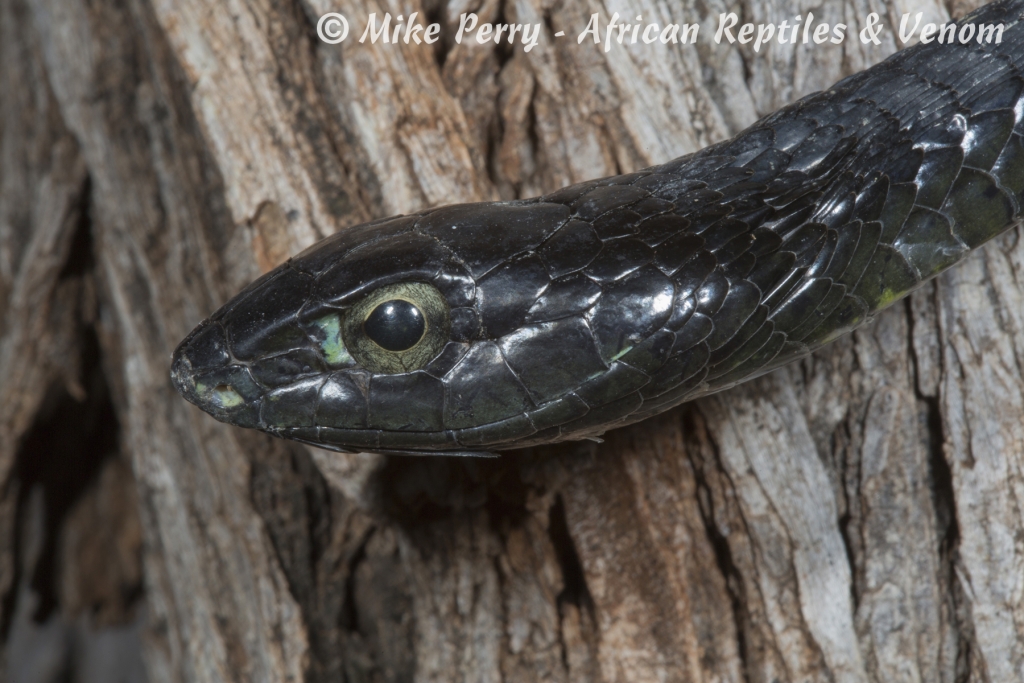

Boomslang Body Shape and Scales:
- Head: Egg-shaped, large and blunt. The head is clearly distinct from the body.
- Eyes: Exceptionally large.
- Body scales: Prominently keeled (ridged) throughout growth.
Size:
- Adult Boomslang measure 100–160 centimeters (3.3–5.2 ft) in total length (including tail).
- Boomslang rarely exceed 180 centimeters (6.00 ft).
Habitat:
- Boomslang are excellent climbers and highly arboreal, favouring forested and woodlands.
- The Boomslang can be found other habitats including fynbos, karoo shrubland, savannas, and even grasslands.
Venom:
- The boomslang possesses highly potent, slow-acting, pro-coagulant (haemotoxic) venom that causes internal hemorrhage.
- An adult dose can be as low as 1mg, with the snake yielding venom between 1-15mg.
- Death can occur 24-72 hours or even longer after a bite.
- A highly effective monovalent anti-venom is available, even for bites that are several days old.
Danger:
- Boomslang bites are rare in humans and, in most of the known bites, the victims were either handling or catching the snake.
- Because bites are rare, boomslang are not a serious threat to humans.
- Boomslang will not attack or bite without good reason – they will only bite if provoked, handled or hurt.
Further info:
This concludes our article on Color Variations in the Boomslang. For more info see our Boomslang profile page or download a Boomslang ID Kit from the Snake ID Kits page.


